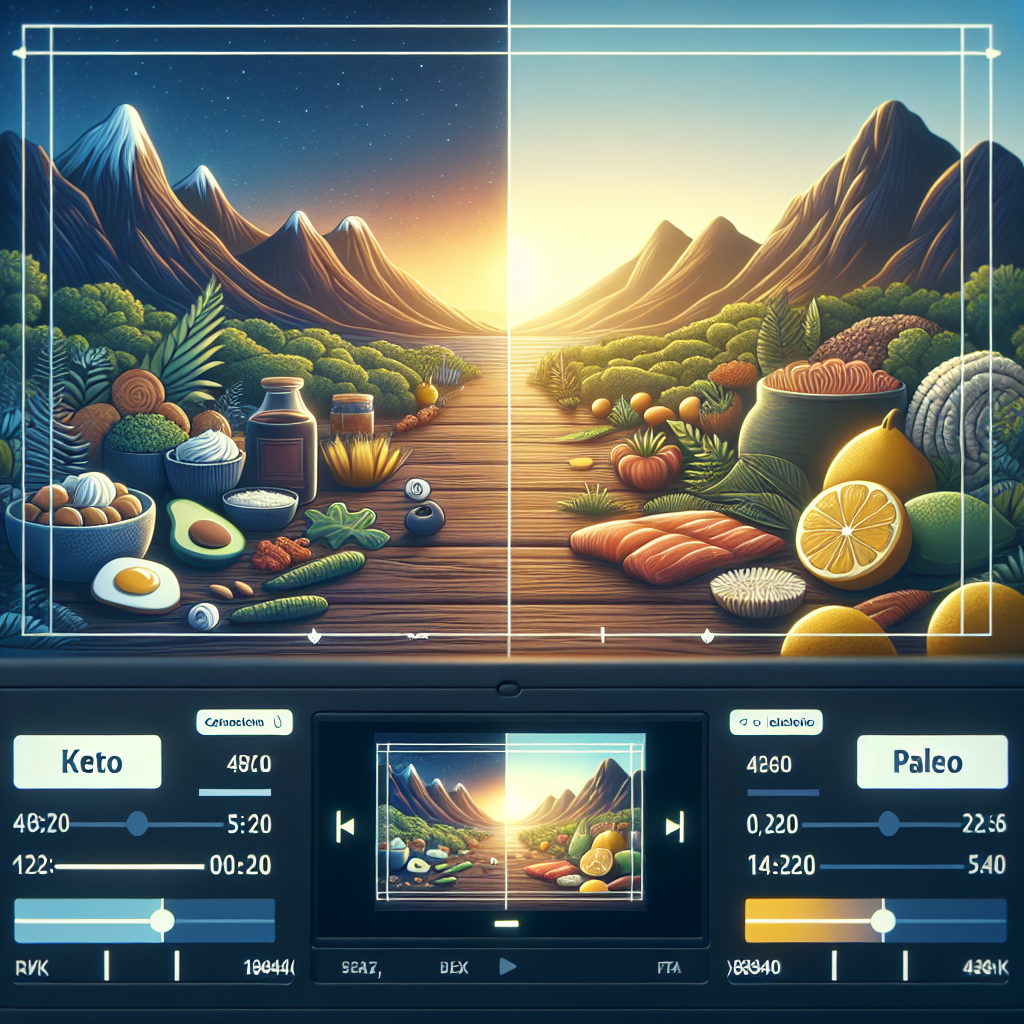
-
Table of Contents
Comparing Keto and Paleo: Which Diet Reigns Supreme?

When it comes to weight loss and overall health, diet plays a crucial role. Two popular diets that have gained significant attention in recent years are the ketogenic (keto) diet and the Paleolithic (paleo) diet. Both diets promise weight loss, improved health, and a host of other benefits. But which one reigns supreme? This article will delve into the specifics of each diet, compare their benefits and drawbacks, and help you decide which one might be the best fit for you.
Understanding the Keto Diet
The ketogenic diet, or keto for short, is a low-carb, high-fat diet. It drastically reduces carbohydrate intake and replaces it with fat. This reduction in carbs puts your body into a metabolic state called ketosis, where fat, from your diet and from your body, is burned for energy.
Benefits of the Keto Diet
- Weight Loss: Numerous studies have shown that the keto diet can help you lose weight. For example, a study published in the British Journal of Nutrition found that people on a keto diet lost more weight than those on a low-fat diet.
- Improved Heart Health: The keto diet can improve heart health by reducing cholesterol levels. A study published in the New England Journal of Medicine found that the keto diet significantly reduced levels of total cholesterol, LDL (bad) cholesterol, and triglycerides, while increasing HDL (good) cholesterol levels.
- Control Blood Sugar: The keto diet can also help control blood sugar levels, making it a good option for people with diabetes. A study published in the journal Nutrition & Metabolism found that the keto diet led to significant improvements in glycemic control among patients with type 2 diabetes.
Drawbacks of the Keto Diet
- Difficult to Sustain: The keto diet can be hard to stick to because it requires a drastic reduction in carbohydrate intake. This can lead to feelings of deprivation and make it difficult to sustain in the long term.
- Side Effects: The keto diet can also cause side effects, commonly known as the “keto flu,” which include nausea, fatigue, and headaches.
- Nutrient Deficiencies: Because the keto diet restricts certain food groups, it can lead to nutrient deficiencies if not properly planned.
Understanding the Paleo Diet
The Paleolithic diet, or paleo for short, is based on the types of foods presumed to have been eaten by early humans. It includes lean meats, fish, fruits, vegetables, nuts, and seeds — foods that in the past could be obtained by hunting and gathering. A paleo diet limits foods that became common when farming emerged about 10,000 years ago, including dairy products, legumes, and grains.
Benefits of the Paleo Diet
- Weight Loss: Like the keto diet, the paleo diet can also aid in weight loss. A study published in the Journal of the American Medical Association found that people on a paleo diet lost more weight than those on a traditional low-fat diet.
- Improved Heart Health: The paleo diet can improve heart health by reducing cholesterol and blood pressure levels. A study published in the European Journal of Clinical Nutrition found that the paleo diet led to significant improvements in blood pressure and lipid profiles.
- Reduced Inflammation: The paleo diet can also reduce inflammation, which is linked to a variety of chronic diseases. A study published in the Journal of Nutrition and Metabolism found that the paleo diet led to significant reductions in markers of inflammation.
Drawbacks of the Paleo Diet
- Difficult to Follow: The paleo diet can be difficult to follow because it restricts many common foods, including dairy, grains, and legumes.
- Expensive: The paleo diet can be more expensive than a regular diet because it emphasizes high-quality meats and organic produce.
- Nutrient Deficiencies: Like the keto diet, the paleo diet can also lead to nutrient deficiencies if not properly planned.
Keto vs Paleo: Which Diet Reigns Supreme?
Both the keto and paleo diets have their benefits and drawbacks. They can both aid in weight loss, improve heart health, and offer other health benefits. However, they can also be difficult to follow, potentially expensive, and lead to nutrient deficiencies if not properly planned.
The best diet for you ultimately depends on your individual needs, preferences, and lifestyle. If you prefer a diet that allows for more carbohydrates and emphasizes whole foods, the paleo diet might be a good fit for you. On the other hand, if you’re looking for a diet that can help control blood sugar levels and potentially lead to rapid weight loss, the keto diet might be a better choice.
Before starting any new diet, it’s important to consult with a healthcare professional or a registered dietitian. They can provide personalized advice based on your health status, dietary needs, and goals.
Conclusion
In the battle of keto vs paleo, there’s no clear winner. Both diets offer significant health benefits, but they also have their drawbacks. The best diet is the one that you can stick to in the long term and that meets your individual dietary needs and goals. Remember, a diet is not a one-size-fits-all solution, and what works for one person may not work for another. Always consult with a healthcare professional before starting any new diet to ensure it’s the right fit for you.